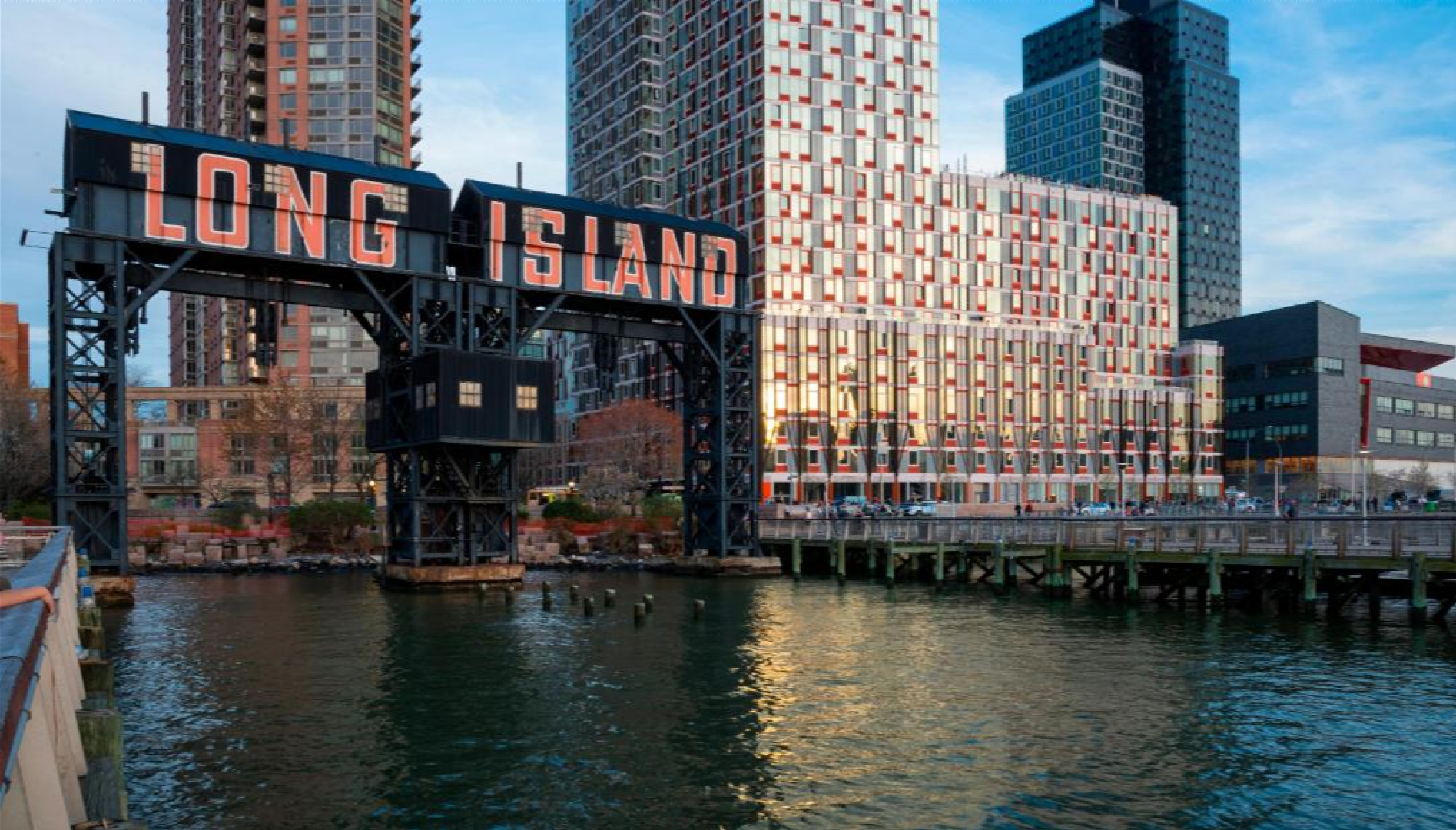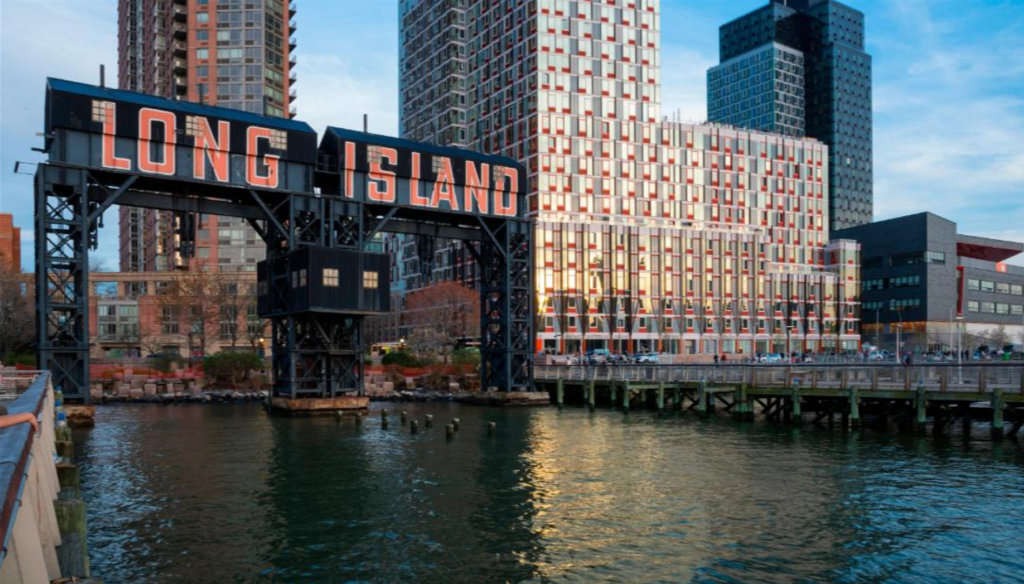Amazon’s high-profile HQ2 competition has rightly put the issue of economic development incentives under the microscope. There is plenty of evidence that traditional state and local location incentives are both wasteful and ineffective, creating a race to the bottom among communities. In the case of HQ2, the selection of Long Island City has also raised questions about a new federal incentive fundamentally designed to promote bottom-up growth in struggling communities nationwide.
That’s because, in addition to a state incentive package valued at more than $1.5 billion in tax credits and other subsidies, the relatively prosperous census tract Amazon will soon call home was chosen earlier this year by Governor Andrew Cuomo as an “Opportunity Zone,” where certain types of investment will be eligible for federal tax benefits.
It’s easy to get lost in the frenzy of HQ2, so let’s take a step back and assess what this actually tells us about Opportunity Zones and how it works.
Meet the country’s Opportunity Zones
First, it’s critical to understand the unique process by which Opportunity Zones were chosen. Congress set a national baseline for eligibility based on income and poverty rates, but it charged governors with determining which of the eligible tracts were the right fit for this incentive. Governors were allowed to nominate up to a quarter of their qualifying low-income census tracts using whatever additional selection criteria or metrics they chose. The rationale was simple: governors are broadly responsible for economic development in their states, and they are accountable to voters in a way that no federal agency can be. The selection process allowed them to layer on their own analytics, local knowledge, and policy goals to determine where this market-based incentive could be put to best use.
Opportunity Zones are overwhelmingly low-income, high-poverty places. In order for a tract to be eligible in the first place, it had to have a poverty rate of at least 20 percent or a median family income (MFI) of less than 80 percent of its wider region’s (with one exception, which we’ll get to later). But governors generally went much further in targeting needy areas with their selections. The average Opportunity Zone (excluding U.S. territories) has a 29 percent poverty rate according to the latest available data — nearly twice the national rate — and an MFI only 59 percent of the respective benchmark at the time of nomination. In dollar terms, the MFI in the average zone is $42,400, compared to $67,900 nationally. In total, 69 percent of zones qualify as “severely distressed” under the CDFI Fund’s classifications.
Residents of the typical Opportunity Zone face an array of challenges. Life expectancy in the selected tracts is almost four years shorter than it is outside of them. Relative to the nation, an additional 10 percent of the local adult population is out of work. The housing stock is a decade older. Nearly a quarter of adults haven’t even completed high school. The zones are also more demographically diverse than the nation as a whole, with a 56 percent share of minority residents compared to 38 percent nationwide.
Was this degree of need targeting inevitable? Certainly not. The law provided governors with broad latitude in making their selections, underscoring the true nature of Opportunity Zones as a federal tool designed to empower state and local leadership. Some observers saw this as a fundamental flaw in the policy and predicted it would lead to the selection of mostly gentrifying, rapidly changing places at the lower end of the need scale among eligible tracts. Instead, the places governors chose were on average more distressed than the eligible tracts not selected.
Long Island HQ2
Governors for the most part succeeded in matching the incentive to high-need places. But as might be expected in any policy initiative of this national scope, there are unfortunate outliers among the country’s thousands of Opportunity Zone census tracts. One of the most extreme is tract 36081000100 in Long Island City, Queens.
Even by outlier standards, the Amazon tract stands out as deeply at odds with the purpose of the Opportunity Zones incentive. It has had no trouble attracting private capital in recent years. Several neighboring tracts remain very distressed, but in this neighborhood incomes are high. A close examination using Enterprise Community Partners’ Opportunity360 tool reveals this tract has relatively few long-term residents, however. It is best understood as an underutilized industrial district undergoing a rapid transformation into a thriving mixed-use neighborhood.
So why was it eligible?
The tract in question only qualified under a special contiguous clause that allowed governors to nominate moderate-income tracts adjacent to nominated low-income ones for no more than 5 percent of their total allocation. The rationale was to allow flexibility in special cases where, for example, a brownfield site or new commercial development straddled census tract boundaries in a needy area. Nationally, governors used the extra discretion sparingly, resulting in only 2.6 percent of all Opportunity Zone tracts falling under the contiguous tract exception. In fact, ten governors nominated no contiguous tracts at all. New York, on the other hand, used its contiguous tract authority more than any of its peers.
Mythbusting
The Opportunity Zones incentive was designed to increase access to equity capital for qualifying investments in target communities. But contrary to prevailing narratives, simply investing in an Opportunity Zone does not qualify one for the tax incentive. First, only capital gains that get reinvested into Opportunity Zones as equity via special-purpose Opportunity Funds are eligible for the tax benefits — no other type of capital is eligible. For projects that utilize multiple different financing streams, only the Opportunity Fund’s equity stake is eligible for the benefit. And Opportunity Funds can only invest in certain things: the stock or partnership interest of a qualifying local business, or local business property. These investments carry a variety of conditions aimed at ensuring the tax benefit results in the creation or expansion of local businesses or substantial property improvement.
Given the relatively specific set of circumstances under which the benefits apply, many investments made into Opportunity Zones will enjoy no favorable tax treatment at all.
Many commentators have jumped to the conclusion that Amazon automatically qualifies for the federal incentive by locating in an Opportunity Zone. This is wrong. Unlike the typical location incentives offered state and local governments, this policy does not provide firm-specific benefits. The mechanics of Opportunity Zones make it deeply uncertain whether Amazon will find a way to utilize the incentive. To do so would entail significant opportunity costs for a company that already has virtually unlimited cheap access to capital markets (indeed it can borrow more cheaply than China can). But it’s in some ways beside the point. The fact that the Long Island City tract was chosen at all is the fundamental problem in this scenario — one that was completely avoidable.
It is also worth remembering that none of the existing investments or structures in Opportunity Zones enjoy any new tax status. The incentive is designed to catalyze new investments, not reward past ones. In that sense only completely new projects or substantial rehabilitations (in which improvements in the property exceed the basis) are eligible. Nothing in zones today is grandfathered into favorable treatment. Buying and holding without substantially improving property receives no benefits either. These nuances often get lost in the mix, but they matter a great deal in assessing how the incentive will be deployed in any given area.
What about gentrification?
While the contrast between the broader map of Opportunity Zones and the Amazon tract in Long Island City couldn’t be starker, it inevitably raises important questions about the intersection of investment and neighborhood change.
Simply put, gentrification and displacement are not fundamental issues in the vast majority of Opportunity Zones nationwide. Researchers at the Urban Institute examined the state of socioeconomic change in Opportunity Zones, flagging tracts that stood out for shifting demographics over the 15 year period leading up to nomination. Only 3.6 percent of all selections, or 284 zones out of over 7,800 tracts analyzed, were flagged for having gentrified, loosely defined. And even those 284 tracts include some places that seem like worthy candidates for an incentive designed to bring new investment to struggling areas. One such example is the English Avenue neighborhood in Atlanta, where more than one-third of homes remain vacant, over half the population lives in poverty, life expectancy is 9 years shorter than the national average, and past revitalization efforts have consistently come up short. This is why Urban’s researchers noted the limitations of any formulaic approach to evaluating gentrification or displacement risks from afar. Qualitative local insights are needed to round out the picture, which is precisely why Congress empowered governors to select Opportunity Zones.
As Alan Mallach notes in his recent book, The Divided City, there is nothing inevitable about gentrification or its repercussions. Neighborhoods can, should, and do change. The goal should be to render them both accessible to and empowering of the individuals who call them home. It’s clear that a small fraction of newly-designated Opportunity Zones are indeed at risk of experiencing downsides of reinvestment as they emerge from long periods of decline. Those downsides must be managed through proactive, community-focused local policymaking.
Local policymakers have influence over the upside, too: stipulating that investment flow towards affordable housing, zoning such that local entrepreneurs get rights to new storefronts, layering extra incentives to remove blight, and easing permitting for that new daycare center. Opportunity Zones are simply one tool among many that should be deployed on behalf of vibrant and inclusive community growth.
The big picture
It’s worth remembering why Opportunity Zones generated broad bipartisan support in the first place. The recovery from the Great Recession bypassed many of the country’s neediest communities in a continuation of a decades-long trend of disinvestment from the neighborhoods where the poorest Americans live. EIG’s Distressed Communities Index demonstrates how the fruits of economic growth today sort geographically according to the underlying well-being of communities. Jobs and businesses narrowly accrue to well-off areas and vacate struggling ones. For those at the bottom, the gap between their communities and those the top is growing wider. The much-discussed divergence of U.S. communities is real, but it is not just occuring on the scale of metro versus metro; it’s zip code versus zip code and census tract versus census tract.
The capital landscape is even more lopsided towards thriving areas where risks are lower and returns are almost guaranteed, given current patterns of growth. Philanthropies, CDFIs, grants and programs — often under-resourced — are left to fill the gaps.
Opportunity Zones is designed to help break this cycle, change behavior, and harness the power and resources of the market to build an inclusive economic future in more communities. Congress incorporated insights learned from past attempts at place-based tax incentives. It aimed to create a more flexible model with low barriers to entry and broad applicability to marshal more resources into the business of community revitalization. That includes providing a new lifeline for local entrepreneurs, who are the true engines of community prosperity.
Going forward, state and local leaders are responsible for devising the strategies that will take these few new lines of the tax code and turn them into something that unlocks opportunity for local residents and entrepreneurs. Capital alone is not a strategy.
We’re also going to need data. We need to be able to survey the emerging landscape of Opportunity Funds. We need tract level data to know which zones received investment under the provision, how many investors were active there, and what types of projects or businesses they financed. Right now hypotheticals are doing all the talking, but over the long-term the actual results will tell us what Opportunity Zones accomplished and where.
Data and tracking are only one element of the rulemaking process still underway. The rules governing investments into new and expanding businesses are still in development as well. That side of the market, completely under-reported thus far, is where much of the truly transformative potential to build entrepreneurial ecosystems in struggling communities lies.
Opportunity Zones is a national initiative still in its infancy. Thousands of communities, local leaders, investors, and organizations big and small have joined together in an effort to revitalize overlooked corners of the national map. It would be a shame for Long Island City to overshadow the hard and innovative work being done in the trenches everywhere from rural Alabama to Erie, Pennsylvania. But it does underscore one core truth about Opportunity Zones: there is no substitute for local leadership.







